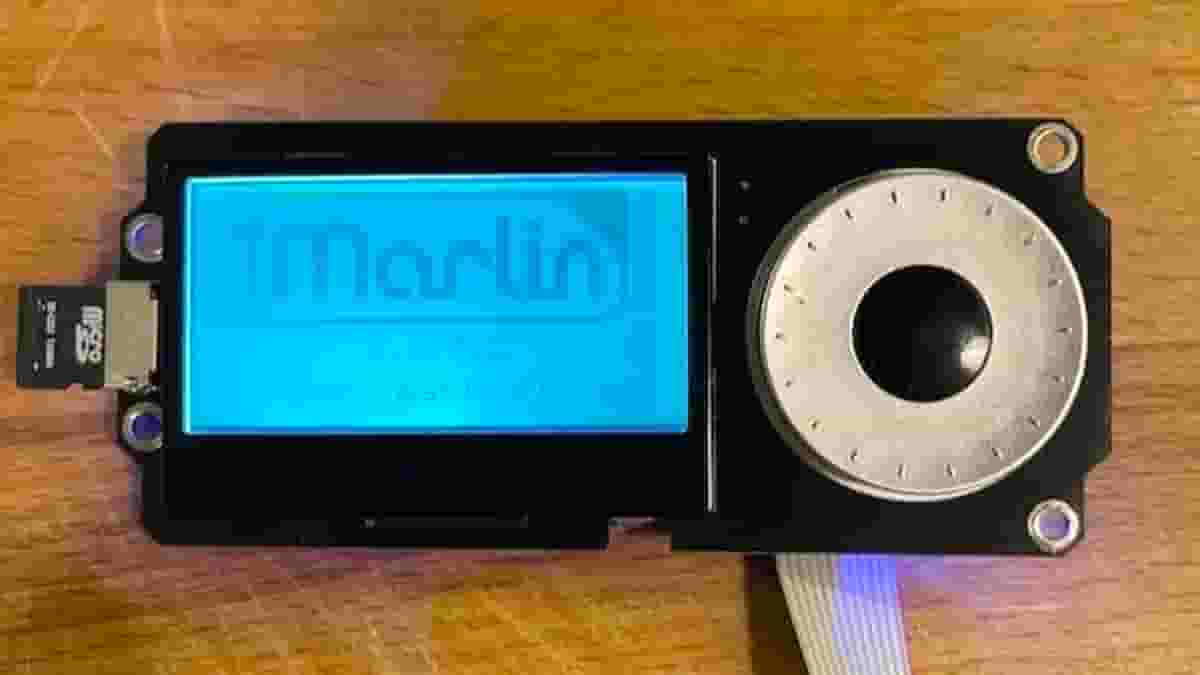Firmware is the link between software and hardware: It converts inputs from software to an output that computer hardware can understand.
In 3D printing, that process happens whenever you send a G-code file from your slicing software to the 3D printer: The firmware “works out” the code and accordingly gives an output to the stepper motors, heaters, display, and so on.
For example, let’s consider the G-code command “G1 X10 Y20”. The firmware understands this command and then determines the output to be given to the stepper motor so that the extruder reaches X=10 and Y=20. Without firmware, the 3D printer wouldn’t understand the G-code input.
Two of the most popular firmware options available today are Marlin and Klipper. While both serve the same purpose, they take different approaches to processing and executing commands. This article compares Marlin and Klipper, highlighting their advantages, disadvantages, and ideal use cases.
Overview of Marlin and Klipper
Marlin Firmware
Marlin is one of the oldest and most widely used 3D printer firmware options. It runs directly on the printer’s microcontroller (MCU) and processes G-code commands in real time. Marlin is known for its robust features, widespread support, and compatibility with a vast range of 3D printers.

Klipper Firmware
Klipper is a newer firmware that takes a different approach. Instead of processing G-code on the printer’s MCU, Klipper offloads the calculations to a separate computer, typically a Raspberry Pi. The MCU only executes precomputed motion commands, leading to higher efficiency and faster print speeds.

Key Differences Between Marlin and Klipper
1. Processing Method
- Marlin runs entirely on the printer’s mainboard (MCU), handling all calculations directly.
- Klipper offloads processing to an external computer (like a Raspberry Pi), sending only precomputed motion commands to the MCU.
2. Speed
- Marlin is limited by the processing power of the printer’s mainboard.
- Klipper is faster since all calculations are done on a more powerful external computer.
3. Ease of Use
- Marlin requires recompiling the firmware every time a configuration change is needed.
- Klipper uses a text-based configuration file, allowing changes without reflashing.
4. Hardware Requirements
- Marlin works on most printer mainboards, including older 8-bit controllers.
- Klipper requires an additional computer (usually a Raspberry Pi) to function.
5. Print Quality
- Marlin provides good print quality but can be limited by MCU processing speed.
- Klipper enables better precision and higher speeds using advanced features like input shaping and pressure advance.
6. Installation Complexity
- Marlin is easier to set up since everything runs on the mainboard.
- Klipper requires additional hardware setup and software installation.
7. Community & Support
- Marlin has a large and well-established community with support from printer manufacturers.
- Klipper has a growing but smaller community, with strong support from enthusiasts.
8. Macro Customization
- Marlin has limited scripting capabilities for automation.
- Klipper allows advanced scripting and macros, enabling more customization and automation.
Advantages of Marlin
✅ Mature & Well-Supported: Marlin has been around for years and is supported by most 3D printer manufacturers.
✅ Works on Low-Power Boards: Runs on most 8-bit and 32-bit printer mainboards without additional hardware.
✅ No Extra Hardware Needed: Everything runs on the printer’s MCU, making it a simpler setup.
✅ Wide Compatibility: Works with almost all printers, including older models.
Disadvantages of Marlin
❌ Limited Processing Power: The printer’s MCU handles all calculations, which can limit performance on complex prints.
❌ Requires Firmware Compilation for Changes: Any major configuration change requires recompiling and flashing the firmware.
❌ Less Optimized for High-Speed Printing: Without advanced processing, fast printing can introduce artifacts like ringing.
Advantages of Klipper
✅ Faster Print Speeds: Offloading computations to a Raspberry Pi allows high-speed printing with minimal quality loss.
✅ Input Shaping & Pressure Advance: Reduces vibrations and improves extrusion control, leading to better print quality.
✅ Easier Configuration Changes: Uses a simple text-based configuration file that can be updated without reflashing firmware.
✅ Better Multi-Threading & Efficiency: Klipper can control multiple MCUs, allowing for more complex setups like multi-extruder or tool-changing printers.
Disadvantages of Klipper
❌ Requires Additional Hardware: Needs a Raspberry Pi or another single-board computer to function.
❌ More Complicated Setup: Requires additional software installation and network configuration.
❌ Not as Widely Supported: Fewer pre-configured printer profiles compared to Marlin.
4. Which Firmware Should You Choose?
Choose Marlin if:
- You have a standard 3D printer and don’t need ultra-high speeds.
- You prefer a simple setup with everything running on the mainboard.
- You are using a lower-end or 8-bit printer mainboard.
- You don’t want to deal with extra hardware like a Raspberry Pi.
Choose Klipper if:
- You want faster print speeds without sacrificing quality.
- You plan to use advanced features like input shaping and pressure advance.
- You don’t mind setting up a Raspberry Pi or another external controller.
- You want easier real-time configuration changes.
5. Conclusion
Both Marlin and Klipper are excellent firmware choices, but they cater to different needs. Marlin is the best option for users who want reliability, ease of use, and compatibility without extra hardware. Klipper, on the other hand, is ideal for users who want to push the limits of speed and quality while leveraging a powerful external processor. The latest versions of marlin supports a lot of new features allowing them to print as fast as Klipper printers but all the new improvements and experimental features are first available to Klipper printers since they are easily configurable.
If you’re a beginner, start with Marlin. If you’re comfortable with advanced configurations and want to optimize your prints for speed and precision, Klipper is worth exploring.